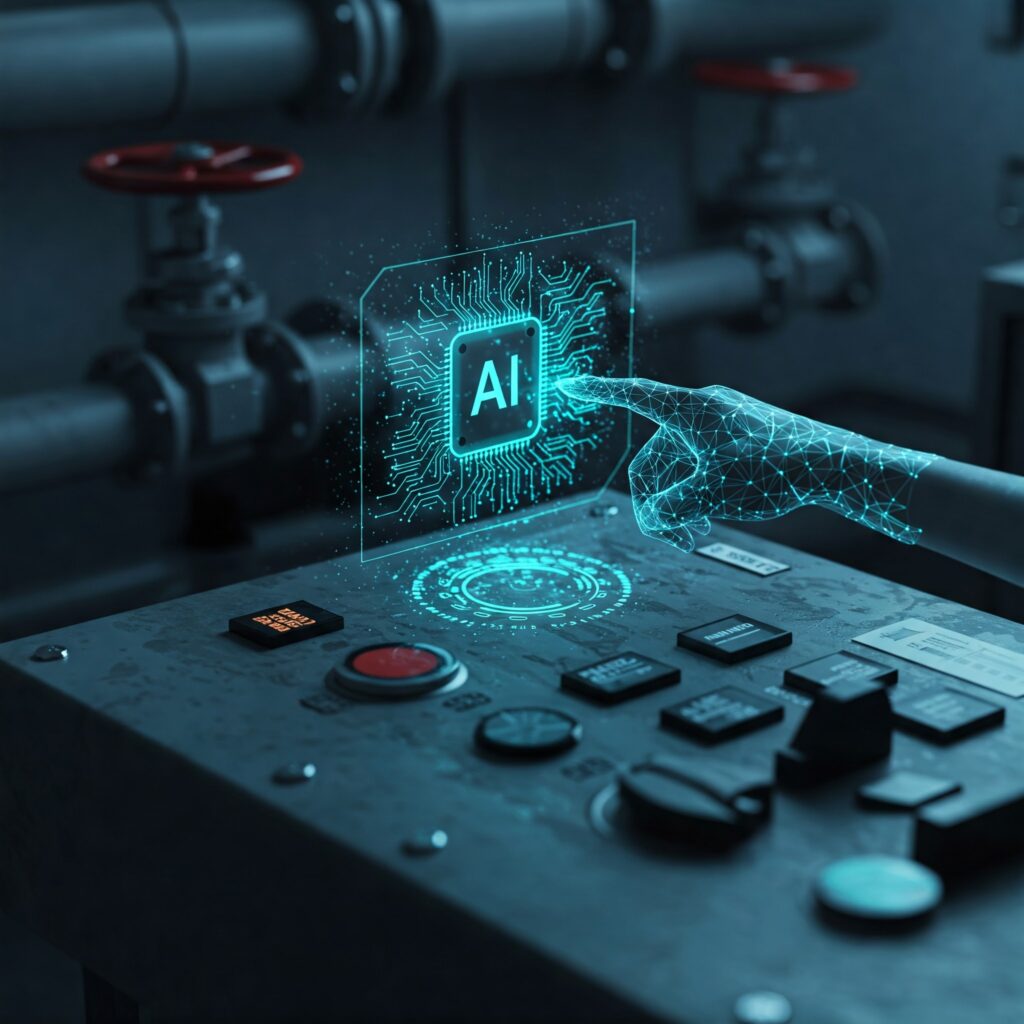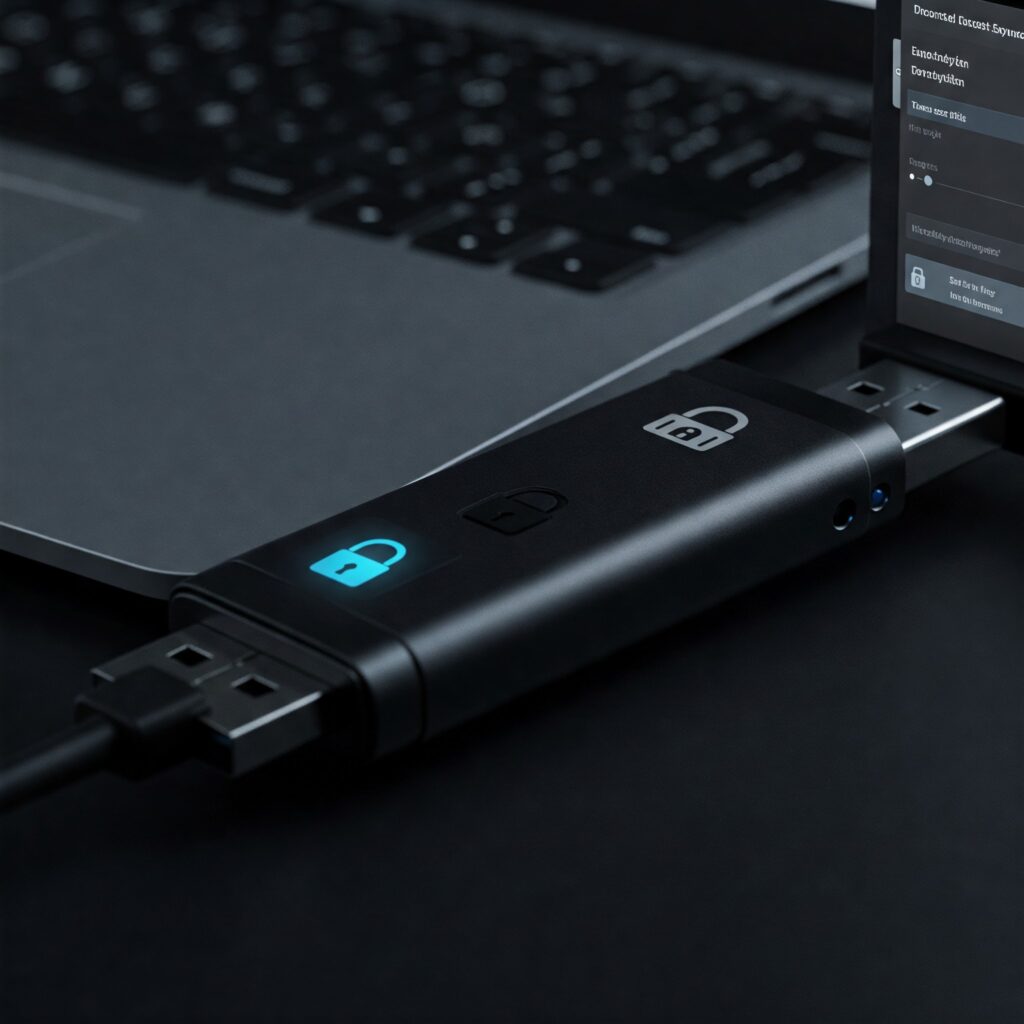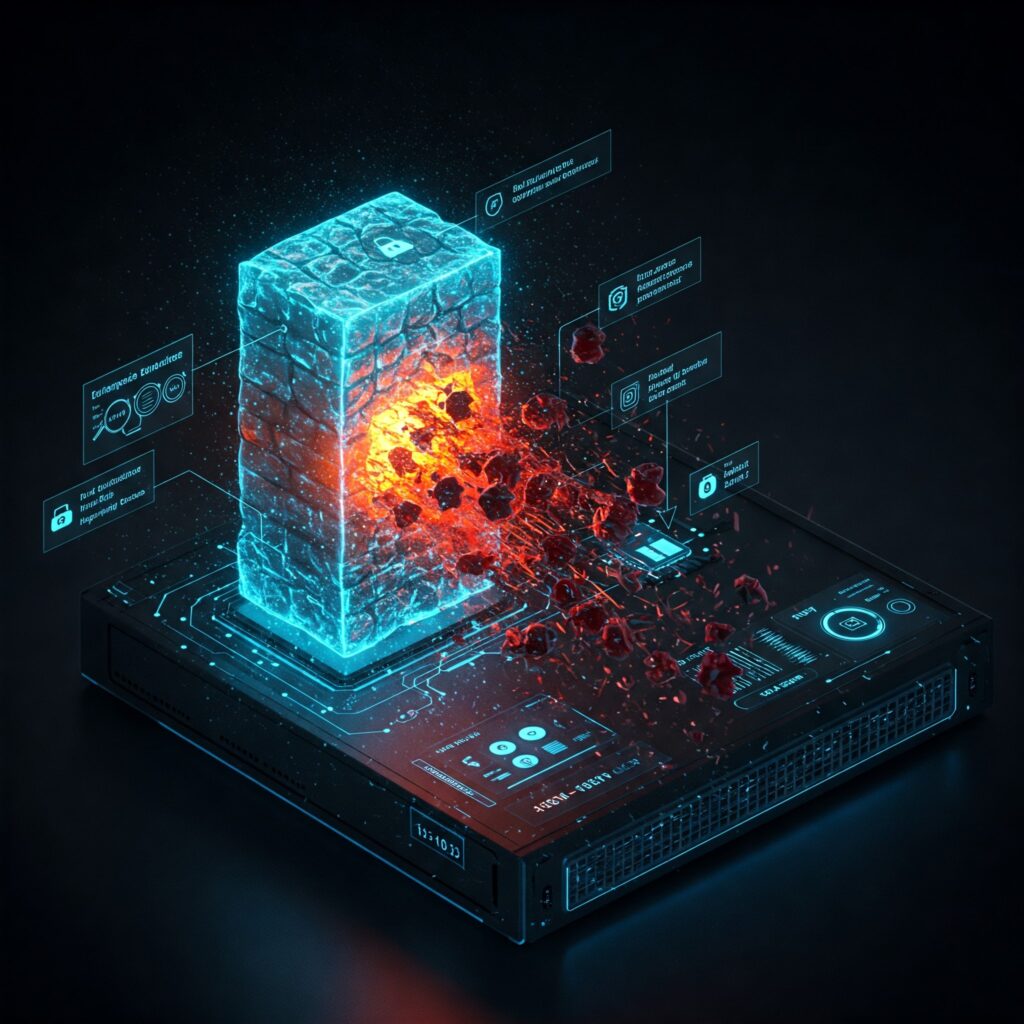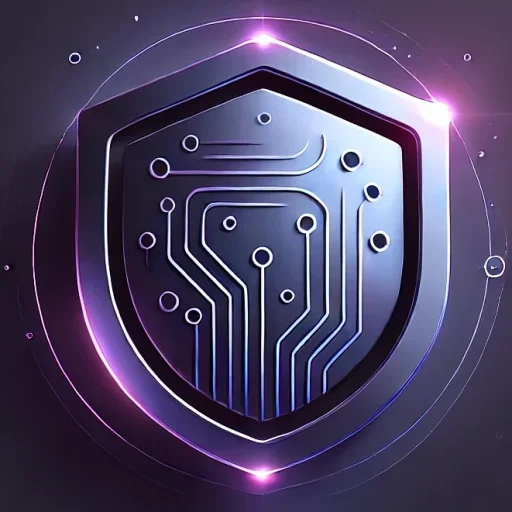
In 2025, the stakes in cybersecurity have never been higher. AI-powered cyberattacks are no longer a futuristic threat—they’re here, targeting critical infrastructure such as energy grids, water systems, and banking networks. These sophisticated assaults leverage artificial intelligence to exploit vulnerabilities at an unprecedented scale and speed. This blog dives deep into how hackers are using AI to disrupt our daily lives, the sectors most at risk, and what you can do to protect yourself and your community. From energy sector hacking to breaches in banking security, we’ll explore the frontline of this digital war.
How AI-Powered Cyberattacks Are Changing the Game
Unlike traditional hacking methods, AI-enhanced cyberattacks can:
✔ Automate reconnaissance, scanning thousands of networks for vulnerabilities within seconds.
✔ Bypass security systems, using machine learning algorithms to evade firewalls and intrusion detection systems.
✔ Self-replicate and evolve, adapting to security patches and continuously finding new entry points.
These AI-powered cyberattacks are not just a corporate threat—they pose a direct risk to national security. The biggest targets include:
- 🏭 Energy grids – AI-driven malware is disrupting power plants.
- 💧 Water supply systems – Hackers are manipulating chemical treatments.
- 🏦 Banking networks, — AI-driven deepfake fraud and ransomware attacks can cause catastrophic financial damage.
This post will break down:
✅ How AI is being used to attack critical infrastructure
✅ The most dangerous cyber threats in 2025
✅ AI-powered cybersecurity solutions to defend against these attacks
🔐 Sign up for our cybersecurity newsletter and updates here →
🔗 Related: Top 5 Breakthrough AI-Powered Cybersecurity Tools Protecting Businesses in 2025
Affiliate Disclosure: This post contains affiliate links. If you purchase through these links, we may earn a small commission at no extra cost to you. We only recommend products we trust and use ourselves. Learn more about our affiliate policy.
⚡ 1. AI-Powered Cyberattacks on Energy Grids
How Hackers Use AI-powered cyberattacks to disrupt the Energy Grid
Energy grids are one of the most vulnerable critical infrastructure targets for AI-powered cyberattacks. Modern power plants, substations, and transmission networks are managed by Industrial Control Systems (ICS) and Supervisory Control and Data Acquisition (SCADA) systems, both of which are increasingly connected to cloud-based AI management platforms. While this connectivity improves efficiency, it also exposes power grids to AI-driven cyber threats that can manipulate or shut down operations.
🔴 AI-enhanced malware threats: AI-enhanced malware can autonomously scan for vulnerabilities, evade detection, and adapt its attack methods to bypass security patches.
🔴 AI-coordinated DDoS attacks: AI-powered botnets can orchestrate large-scale Distributed Denial-of-Service (DDoS) attacks against power grid control centers, overloading servers and causing widespread blackouts.
🔴 Automated vulnerability scanning: AI-driven hacking tools rapidly analyze infrastructure weaknesses in outdated power systems, exploiting legacy hardware that was never designed for modern cybersecurity threats.
🔴 Physical infrastructure disruptions – AI-powered cyber-physical attacks can infiltrate smart grid components, IoT-enabled sensors, and AI-controlled circuit breakers, causing system-wide failures.
Real-World Example: In 2023, Russian-backed hackers used AI-enhanced malware to attack Ukraine’s power grid, causing nationwide blackouts. By 2025, these attacks will become fully autonomous, requiring little to no human oversight.
How to Defend Against AI-powered Cyberattacks on Energy Grids
As AI-powered cyberattacks grow more sophisticated, governments and energy providers must deploy advanced AI-driven cybersecurity solutions to safeguard critical infrastructure. Key defenses include:
✅ AI-powered firewalls – Traditional firewalls rely on predefined rules, but AI-enhanced firewalls can continuously analyze attack behaviors and autonomously block new cyber threats before they escalate.
✅ Machine learning-based anomaly detection – AI-driven Intrusion Detection Systems (IDS) monitor real-time network traffic for unusual activity, detecting AI-enhanced cyber intrusions that evade traditional defenses.
✅ Encrypted grid communications – Power grids should implement end-to-end encryption and quantum-resistant cryptographic algorithms to prevent AI-powered interception of command and control (C2) systems.
✅ AI-enhanced automated response systems – AI-driven cyber defense platforms can isolate compromised grid components, preventing malware from spreading and restoring operational stability faster than human intervention.
One of the best ways to defend against AI-driven power grid attacks is to install enterprise-grade firewall hardware that can block malicious AI-driven intrusion attempts.
✅ Recommended Product: Firewalla Gold – AI-Powered Firewall for Enterprise Security
For physical security, AI-powered security cameras with real-time anomaly detection can help protect energy infrastructure facilities from unauthorized access and cyber-physical threats.
✅ Recommended Product: EUFY AI Security Camera – Smart Motion Detection & Facial Recognition
🔗 Related: Shocking AI-Powered Cybersecurity Threats in 2025: Protect Yourself Against New Advanced Attacks
🔗 External Source: CISA: Protecting Energy Infrastructure from AI Cyber Threats
💧 2. AI-powered cyberAttacks on Water Supply Systems

How Hackers Are Targeting Water Infrastructure
Water supply networks are highly automated, relying on Industrial Control Systems (ICS) and Artificial Intelligence (AI) monitoring tools to regulate water flow, chemical treatments, and pressure management. While these AI systems improve efficiency, they also introduce new vulnerabilities. AI-powered cyberattacks can now manipulate treatment plants, disable filtration processes, and contaminate drinking water supplies on an unprecedented scale.
💧 AI-driven ransomware – Hackers can launch ransomware attacks that lock out municipal water operators, demanding millions in cryptocurrency to restore access to water purification systems.
💧 AI-enhanced chemical tampering – Attackers can manipulate chemical treatment algorithms, altering chlorine, fluoride, or pH levels, making water undrinkable or hazardous.
💧 Compromised IoT water sensors – AI-powered cyberattacks can hijack IoT-enabled smart water meters, falsifying data or shutting off water distribution to entire neighborhoods or industrial zones.
💧 AI-powered deepfake phishing for operator access – Cybercriminals are using deepfake audio and video to impersonate government officials or plant supervisors, tricking employees into disabling security protocols.
Real-World Example: In 2021, a cybercriminal group attempted to increase lye levels in a Florida water plant. While a human operator caught the attack in time, AI automation could soon remove this critical human oversight, making these incidents more common and harder to stop.
Defensive Strategies Against AI-Powered Cyberattacks on water infrastructure
To mitigate AI-driven threats, municipal water systems must adopt proactive cybersecurity measures that integrate AI-based defense mechanisms:
✅ AI-driven real-time monitoring – AI-powered cyber defense systems can analyze sensor data in real time, automatically shutting down suspicious operations before contamination occurs.
✅ Zero-trust security protocols – Water treatment facilities should deploy zero-trust cybersecurity models, requiring multi-factor authentication (MFA) for every system login and network connection.
✅ AI-enhanced biometric access control – AI-powered facial recognition and fingerprint authentication prevent unauthorized personnel from tampering with water purification systems.
✅ Predictive AI cybersecurity platforms – Machine learning algorithms can forecast potential cyberattacks by detecting irregular command sequences, allowing operators to intervene before a full-scale breach occurs.
AI-driven cyberattacks targeting IoT devices in water infrastructure highlight the need for secure encrypted storage solutions that prevent unauthorized access to critical data logs and operational commands.
✅ Recommended Product: Kingston Ironkey Keypad Encrypted USB Drive – Secure Data Storage for Infrastructure Security

Since many water treatment facilities rely on remote-access security protocols, ensuring that remote logins are protected with military-grade VPN encryption is essential for cybersecurity.
✅ Recommended Product: Surfshark VPN, Proton VPN, and NordVPN Threat Protection provide encrypted data security to prevent unauthorized access and mitigate cyber threats.
🔗Related: Best AI-Powered VPNs to Protect Your Privacy in 2025
🔗 External Source: CISA: Cybersecurity in Water Infrastructure
🏦 3. AI-Powered Cyberattacks on Banking & Financial Institutions

How AI Cybercriminals Are Targeting Banks
The financial sector is now a prime target for AI-powered cyberattacks due to the massive amounts of sensitive financial data it manages. Cybercriminals are leveraging AI-driven hacking tools to rapidly analyze thousands of banking systems, searching for security gaps in authentication processes, digital wallets, and financial transactions. Unlike traditional cyber threats, AI-powered attacks are self-learning, automated, and adaptive, making them significantly more difficult to detect and neutralize.
🏦 Deepfake-powered fraud – AI-generated deepfake voices and video impersonations trick financial institutions into approving fraudulent transactions, making it nearly impossible to distinguish legitimate customers from cybercriminals.
🏦 AI-enhanced insider attacks – Hackers use machine learning algorithms to identify compromised employee credentials and simulate legitimate behavior, allowing them to infiltrate banking systems undetected.
🏦 AI-driven phishing attacks – Traditional phishing emails are easy to spot, but AI-powered phishing scams generate hyper-personalized messages that trick even cybersecurity-aware employees into revealing sensitive credentials.
🏦 AI-automated fraud detection evasion – AI-generated malware and adversarial AI techniques are now being used to outsmart fraud detection algorithms, allowing cybercriminals to bypass security alerts and process fraudulent transactions.
AI-powered cyberattacks are evolving beyond conventional digital theft. Hackers are now utilizing AI-enhanced credential stuffing—where AI automates login attempts using stolen username-password combinations—to break into banking apps, online payment systems, and cryptocurrency exchanges. Additionally, cybercriminals are deploying AI-driven keyloggers and surveillance malware to silently monitor banking executives, identifying vulnerabilities in multi-factor authentication (MFA) and internal fraud detection processes.
🔗 Related: Can You Really Trust Cold Wallets? New Lessons from the $1.5B Crypto Heist
Example: In 2024, an AI-generated deepfake impersonated a corporate CEO’s voice in real-time to authorize a fraudulent $25 million wire transfer. Despite using voice authentication security, the bank unknowingly approved the transaction.
How to Secure Financial Networks Against AI-Powered Cyberattacks
To combat AI-powered cyberattacks, financial institutions must adopt AI-driven cybersecurity solutions that can predict, detect, and neutralize evolving AI-generated attacks in real time. Key AI cyber defense strategies for banking security include:
✅ AI-powered fraud detection systems – Machine learning models can detect anomalous banking transactions and recognize fraudulent behavior before money is transferred.
✅ Deepfake-resistant biometric authentication – AI-enhanced security measures such as liveness detection and multi-layered biometric verification prevent cybercriminals from using AI-generated deepfakes to bypass security controls.
✅ Zero-trust security models – Banks should implement zero-trust architecture, which requires continuous verification of all users, devices, and applications attempting to access financial networks.
✅ AI-driven behavioral analysis – AI-powered cybersecurity tools can analyze customer behavior patterns to flag fraudulent transactions, even if they appear legitimate at first glance.
✅ Quantum-safe encryption – As AI-driven cyberattacks evolve, traditional encryption methods are becoming obsolete. Quantum-resistant encryption will ensure banking data remains protected from AI-enhanced decryption techniques.
AI-powered phishing scams are now bypassing traditional security measures. A Faraday phone case or RFID-blocking wallet can help executives protect sensitive banking data from AI-enhanced wireless attacks.
✅ Recommended Product: Faraday 5 Pack Faraday Cages for Laptops & Tablets & Phones & Car Keys
For high-security environments, implementing biometric authentication tools can help prevent deepfake-based identity fraud.
✅ Recommended Product: Yale Smart Lock – AI-Powered Biometric Security for High-Risk Accounts
Why AI-Powered Cybersecurity Is Essential for Financial Institutions
The rise of AI-powered cyberattacks in the banking sector represents a critical cybersecurity crisis. Without AI cyber defense strategies, financial institutions remain at risk of massive fraud, insider threats, and deepfake scams that could lead to billions of dollars in financial losses.
In 2025, financial security is no longer just about firewalls and fraud detection—it’s about AI-powered adaptability. As hackers refine strategies for AI-powered cyberattacks, banks and financial institutions must invest in self-learning, AI-enhanced security systems that evolve in real-time, just like the threats they aim to stop.
🔗 External Source: U.S. Treasury Department Report: Uses, Opportunities, and Risks of Artificial Intelligence in Financial Services
🔒 4. AI Cyber Defense Strategies—How to Protect Critical Infrastructure

The rapid evolution of AI-driven cyberattacks has forced governments, corporations, and cybersecurity experts to develop AI-powered countermeasures. Traditional security solutions—firewalls, antivirus software, and manual monitoring—are no longer effective against AI-enhanced threats that can continuously adapt and evolve.
Instead, security teams must fight AI with AI by deploying automated, self-learning defense mechanisms that can detect, predict, and neutralize threats in real time.
Key AI Cyber Defense Strategies
✅ AI-Powered Intrusion Detection Systems (IDS) – Unlike traditional IDS, AI-driven IDS use machine learning to detect anomalous behavior, identifying attacks even if they’ve never been seen before.
✅ Automated Threat Response – AI-powered SOAR platforms react instantly, shutting down cyberattacks in seconds instead of hours.
✅ Quantum Encryption – As AI accelerates decryption capabilities, quantum-resistant encryption ensures critical data remains secure against brute-force attacks.
✅ Zero-Trust Architecture – AI-driven insider threats make continuous verification essential, requiring all users, devices, and applications to be authenticated at every access point.
✅ Behavioral AI-Based Authentication – AI-powered biometric and behavior-based authentication reduces the risk of phishing attacks by making impersonation far more difficult.
AI-driven cyberattacks can evolve in real-time, which means organizations need automated cybersecurity solutions that analyze behavior patterns and preemptively block suspicious activity.
✅ Recommended Product: Surfshark VPN, Proton VPN, and NordVPN Threat Protection provide encrypted data security to prevent unauthorized access and mitigate cyber threats.
Example: The U.S. military has begun deploying AI-powered cyber defense systems that automatically detect and neutralize AI-driven threats before they can cause damage. In 2025, major financial institutions are now using adaptive AI security platforms that learn from attack patterns and improve their defenses in real-time.
🔗 Related: The AI-Powered Malware Time Bomb: 5 Shocking Cyber Threats & How to Stop Them
🔗 External Source: NIST: Cybersecurity, Privacy, and AI
📌 Conclusion: AI Is Changing Cyberwarfare—Are We Ready?
AI-powered cyberattacks are no longer a hypothetical risk—they are already here. In 2025, hackers and nation-state cyberwarfare units are using AI-driven automation to infiltrate power grids, water systems, and financial institutions with unprecedented speed and efficiency. The traditional cybersecurity approach of manually identifying threats and patching vulnerabilities is no longer sufficient.
The only way to combat the threat of AI-powered cyberattacks is to leverage AI cyber defense strategies. Organizations must act now to implement machine-learning-based defenses, real-time monitoring, and automated response mechanisms to prevent catastrophic infrastructure failures.
However, the fight against AI-powered cyberwarfare is not just a technological challenge—it’s also a policy challenge. Governments around the world must work together to create regulations, invest in AI-driven security measures, and train cybersecurity professionals to handle next-generation cyber threats.
The Future of AI and Cybersecurity
🔹 AI-driven hacking techniques will only become more advanced – Attackers will use self-learning malware, deepfake scams, and automated network infiltrations to bypass traditional defenses.
🔹 Quantum computing will play a key role – AI-powered decryption is already breaking traditional encryption methods. Organizations must invest in quantum-safe encryption to protect sensitive data.
🔹 Cyberwarfare will become a primary method of global conflict – As AI-driven cyberattacks grow more sophisticated, nations will increasingly rely on cyberwarfare instead of traditional military tactics to destabilize enemies.
What Can You Do to Stay Protected?
✔ Invest in AI-driven cybersecurity tools – Traditional security measures are no longer enough. Deploy AI-powered threat detection, automated response, and biometric authentication for maximum protection.
✔ Stay informed – The cyberwarfare landscape is constantly evolving. Regularly review cybersecurity research and AI developments to stay ahead of emerging threats.
✔ Adopt a zero-trust approach – Whether you are an individual, business, or government agency, never assume any network, device, or user is secure. Always verify before granting access.
Final Thought on AI-Powered Cyberattacks
AI is revolutionizing both cybersecurity and cybercrime. While businesses and governments are deploying AI-driven defenses, cybercriminals are leveraging AI automation to launch more complex, evasive, and destructive cyberattacks than ever before.
The AI arms race has begun, and the world must prepare now to secure its critical infrastructure, financial institutions, and personal data against next-generation cyber threats.
🔐 Sign up for our cybersecurity newsletter and updates here →
🔗 Read More on AI-Powered Cyberattacks:
- How to Secure Your Smart Home from Hackers: The Ultimate Guide 2025
- Shocking Rise in AI Voice-Cloning Scams: 5 Cybersecurity Threats You Must Know
FAQ: AI-Powered Cyberattacks & Critical Infrastructure
Q: Why are AI-powered cyberattacks more dangerous than traditional hacks?
A: AI cyberattacks are autonomous, adaptive, and scalable. They can evade detection, learn from security patches, and exploit vulnerabilities faster than human hackers.
Q: What industries are most vulnerable to AI-driven cyberattacks?
A: Energy, water, banking, healthcare, and government sectors are prime targets. These industries rely on automated control systems that AI malware can manipulate.
Q: How are hackers using AI to attack financial institutions?
A: AI enables:
- Deepfake fraud to impersonate executives and approve fake transactions.
- AI-driven phishing that personalizes scams for high success rates.
- Insider attack automation, where AI-powered malware infiltrates banking networks.
Q: Can AI cyberattacks cause real-world destruction?
A: Yes. AI-powered attacks on power grids, water treatment plants, and industrial control systems can lead to blackouts, poisoned water supplies, and infrastructure failures.
Q: How can businesses protect themselves against AI-driven cyber threats?
A: Businesses should:
- Deploy AI-driven intrusion detection systems (IDS).
- Implement zero-trust security models to prevent unauthorized access.
- Use quantum encryption to safeguard sensitive data.
Q: Will AI-powered cybersecurity keep up with AI-driven attacks?
A: It’s an AI arms race. AI defenses must evolve as fast as AI-powered cybercrime. The future depends on self-learning security models that can adapt in real-time.
Q: How is AI being used in disinformation and cyber warfare?
A: AI enables:
- Deepfake videos to manipulate political events.
- AI-generated fake news that spreads disinformation.
- Automated social media bots that amplify propaganda at scale.
Q: What’s the best way for individuals to stay protected?
A: Individuals should:
✔ Use multi-factor authentication (MFA).
✔ Invest in AI-powered security software.
✔ Stay informed on emerging cybersecurity threats.
